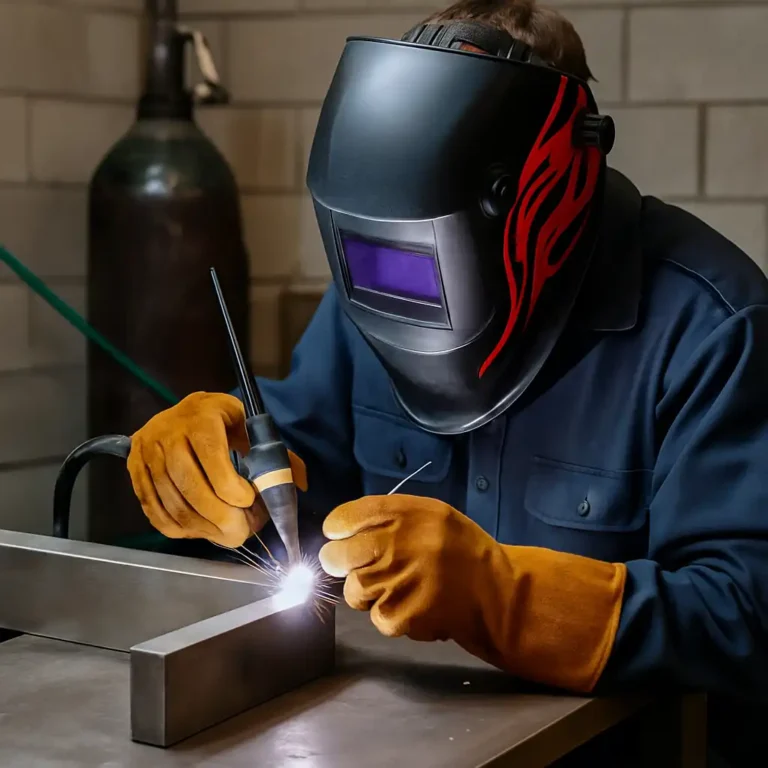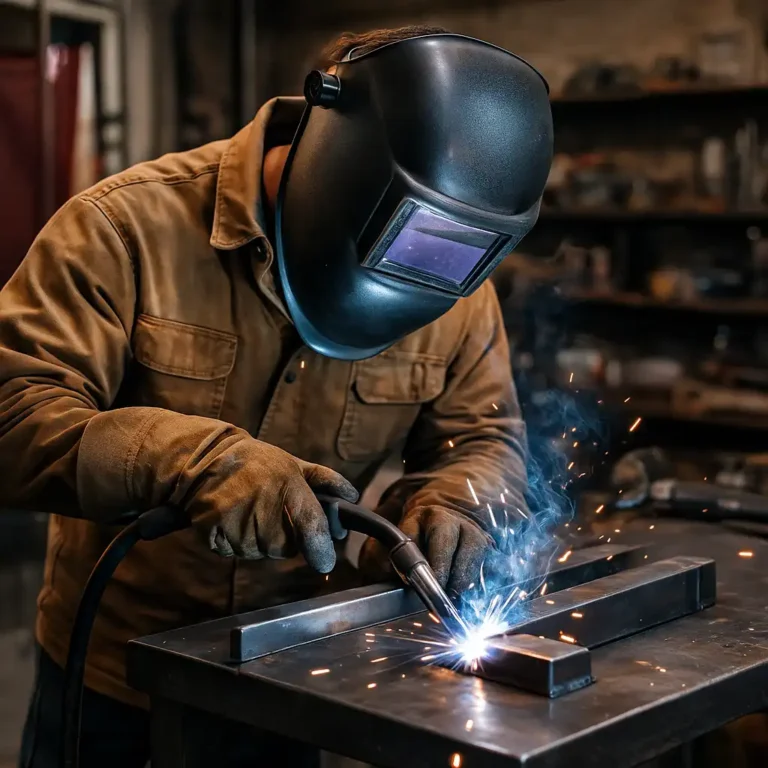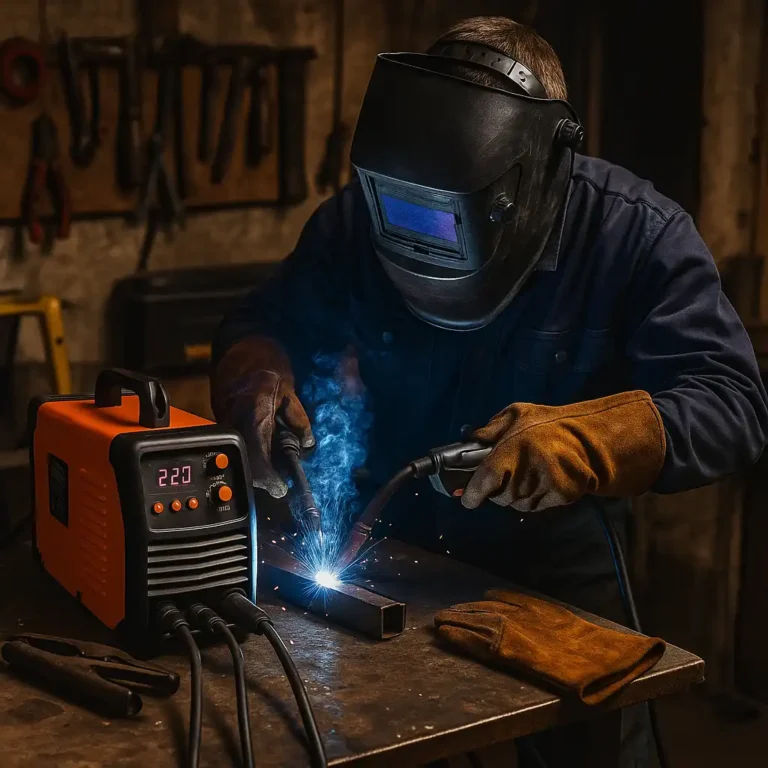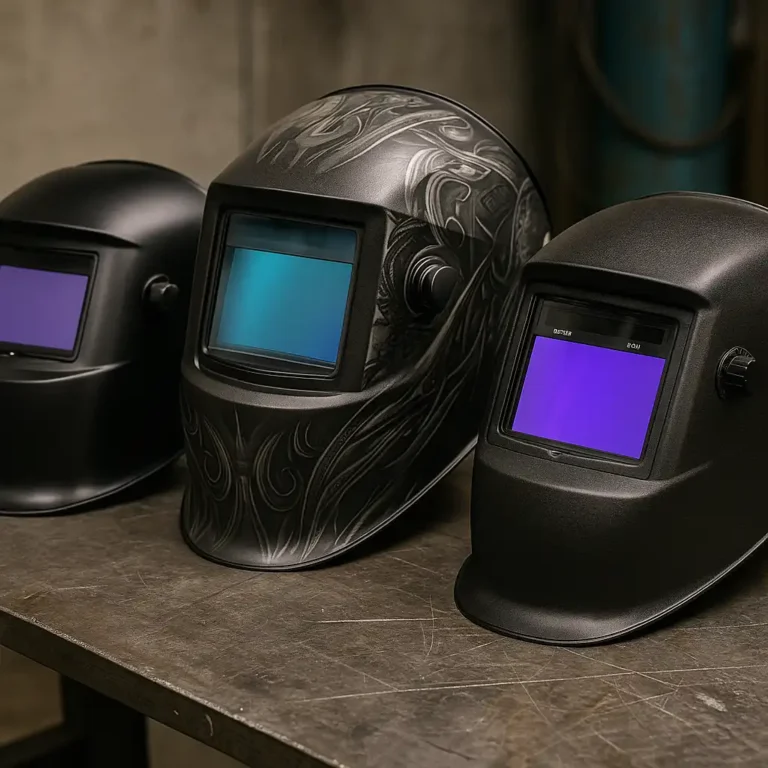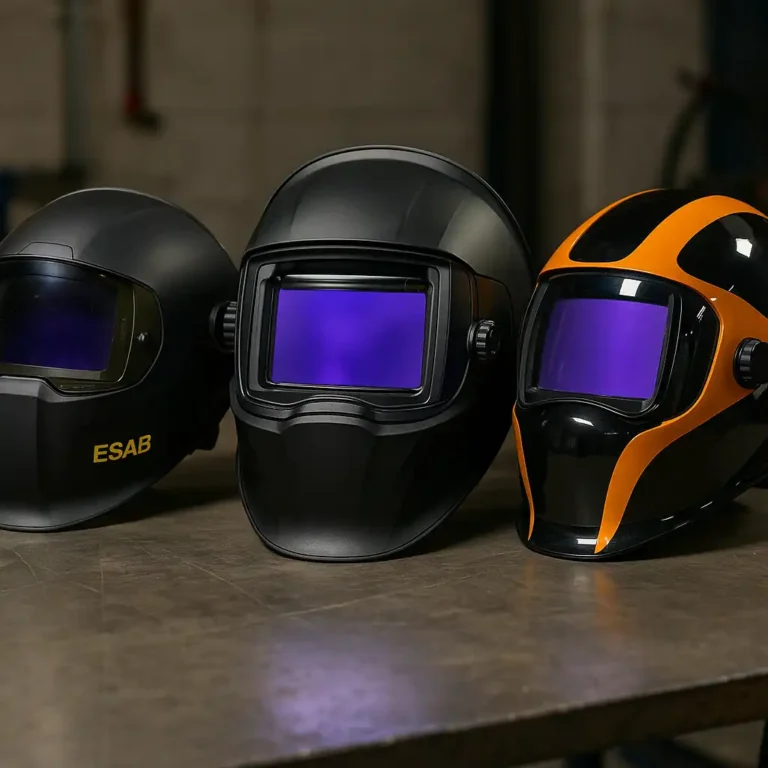Welding Hood vs Welding Helmet: Which Should You Use?

Disclosure: This post contains affiliate links. As an Amazon Associate, I earn from qualifying purchases—at no extra cost to you.
Last Updated: December 2025
A welding hood and a welding helmet both protect your face, but they do it in different ways. The moment the arc fires, you’re hit with UV flash, sparks, and heat. If your gear isn’t the right match for the job, you feel it immediately—poor visibility, neck strain, or stray sparks sneaking through gaps. Choosing the right option lets you focus on your weld instead of fighting your equipment.
As you get more hours under your belt, you start noticing which setup works best in each situation. Field welders often rely on the durability of a traditional hood, while shop welders lean toward the speed and clarity of an auto-darkening helmet.
👉 For a broader rundown of shop protection, check out our guide to core welding PPE and safety basics.
🔍 What’s the Difference Between a Welding Hood and a Welding Helmet?
Both tools protect your eyes and face, but their design and purpose are built around different work conditions. Welding hoods are simple and rugged, usually relying on a passive lens. Welding helmets are more advanced, offering auto-darkening technology and better overall visibility in controlled environments.
Knowing the differences helps you match your gear to the job instead of wrestling with the wrong setup.
🔍 Welding Hoods: Rugged, Simple, Job-Site Ready
Welding hoods are popular in pipeline work, structural welding, and outdoor jobs where conditions are tough and unpredictable. Their passive lenses stay consistent under bright sunlight, and the lightweight shell helps reduce neck fatigue during long runs.
Welders choose hoods because they’re:
• Reliable in harsh conditions
• Lightweight and easy on the neck
• Built with tough fiber or phenolic shells
• Free of electronics that can fail in the field
Pipeline welders especially appreciate how a hood holds up against dirt, wind, and debris while staying predictable.
🔍 Welding Helmets: Precision, Visibility, and Comfort
Modern welding helmets shine in shop settings where accuracy and efficiency matter. An auto-darkening lens gives you a clear view before the arc strikes, helping you position your torch and control the puddle more naturally.
Welders prefer helmets for:
• Instant darkening and shade control
• Better puddle visibility with true-color lenses
• Adjustable headgear for comfort
• Faster repositioning during MIG, TIG, and fabrication work
If your work demands clear sightlines and quick adjustments, a helmet makes a noticeable difference in your weld quality.
🔍 Lens Types: Passive vs Auto-Darkening
Hoods almost always use passive lenses. Helmets rely on auto-darkening. Both are solid choices, but they serve different needs.
Passive lenses stay consistent in sunlight and hold up well to rough use.
Auto-darkening lenses switch instantly, reduce eye strain, and help with precision in changing amperage or positions.
Your environment usually determines which type performs best.
🔍 Comfort and Fit: What to Expect
Comfort affects your weld quality more than most people realize. If your headgear shifts or digs into your forehead, you end up adjusting constantly instead of focusing on your puddle.
Hoods are typically lighter but less adjustable. Helmets weigh more but distribute the weight better thanks to modern headgear systems. If your hood drops mid-weld or creates hotspots on your head, it’s time to tweak or replace your headgear.
🔍 Safety Considerations: Which Protects Better?
Both tools protect you from UV, sparks, and heat. The difference lies in how they perform in specific situations.
Hoods handle outdoor work and harsh conditions better. Helmets give you more visibility, control, and comfort in the shop—but their sensors can misread in tight corners if they get blocked.
Use the one your environment demands, not just the one you’re used to.
🔍 When to Choose a Hood vs a Helmet
Choose a Welding Hood When:
• You weld outdoors or on job sites
• You’re running hot Stick welding
• Sunlight interferes with auto-darkening sensors
• You need gear that takes abuse without failing
Choose a Welding Helmet When:
• You weld mostly in a shop or garage
• You switch between MIG, TIG, and Stick
• You want clearer visibility and shade control
• You need faster, more precise positioning
Many welders keep both on hand and grab the one that suits the day’s work.
📌 Key Takeaways
- Welding hoods are tough, lightweight, and ideal for rugged outdoor work
- Welding helmets offer cleaner visibility and adjustable shading for shop welding
- Passive lenses stay predictable in sunlight, while auto-darkening lenses improve puddle control
- Comfort and headgear adjustment affect weld quality more than most beginners expect
- Choose based on your environment, welding process, and visibility needs
🟢 FAQs
Q: Is a welding hood safer than a welding helmet?
Both are safe when used properly. Hoods excel outdoors, while helmets offer more precision and comfort indoors.
Q: Can you TIG weld with a passive hood?
Yes, but most TIG welders prefer auto-darkening lenses for finer puddle visibility.
Q: Why do pipeline welders still use hoods?
They hold up better in rough, bright, and windy conditions where helmet sensors can struggle.
Q: Do auto-darkening helmets work outside?
They do, but cheaper models can misread sunlight. Higher-end helmets handle outdoor work more reliably.
✅ Conclusion
Choosing between a welding hood and a welding helmet comes down to how and where you weld. Hoods thrive in rough outdoor environments where simplicity wins. Helmets dominate in shop settings where clarity and control matter. When your gear matches your workflow, you stay safer, see better, and lay down cleaner welds with less effort.

